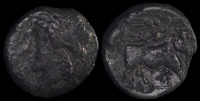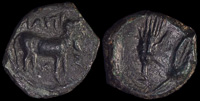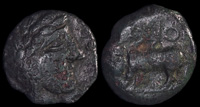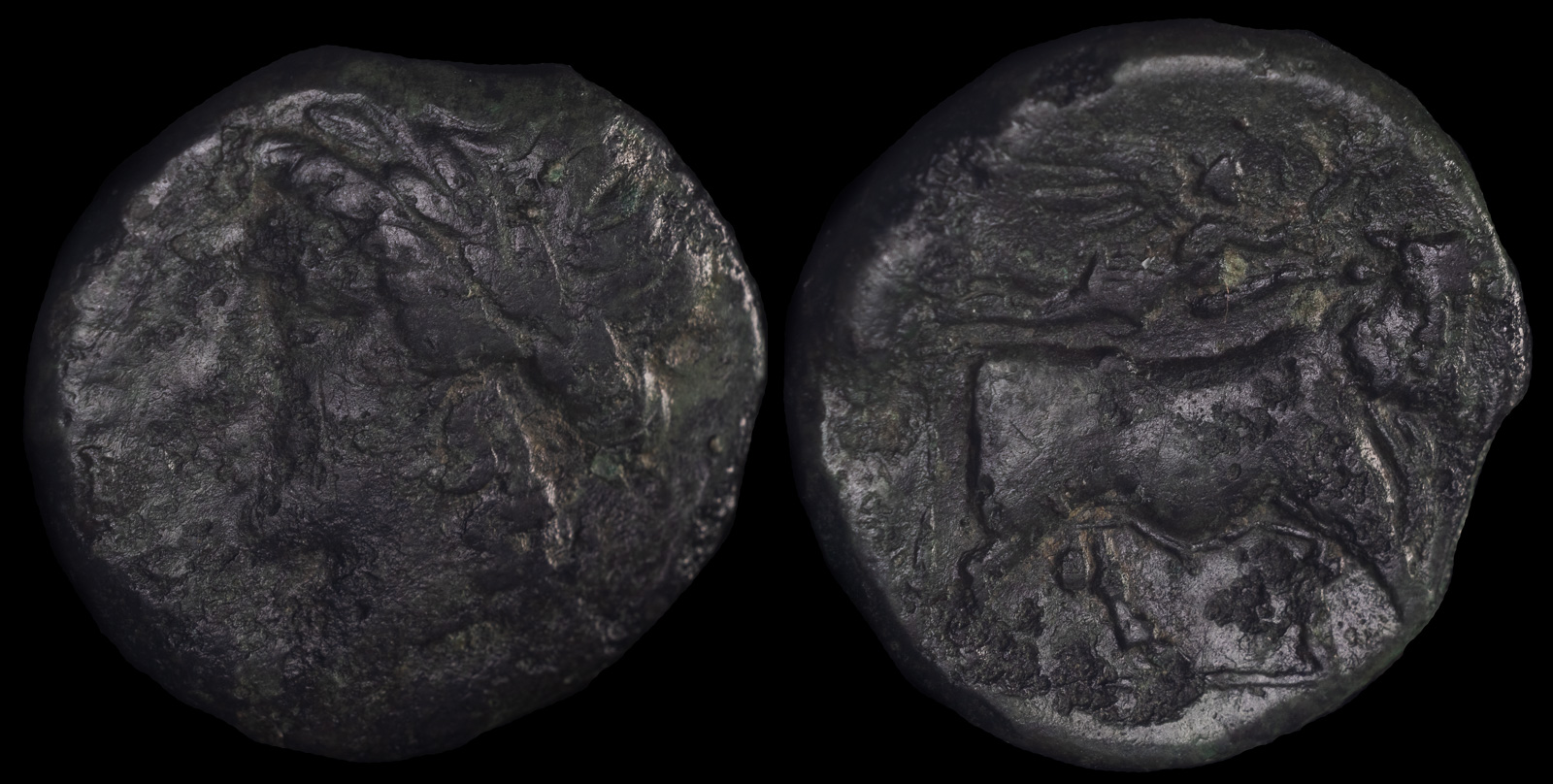Man-headed bull
View All Tags
In ancient Sicilian coinage, the man-headed bull often merged the traditional bull’s strength with the human head, creating a powerful hybrid figure. This image was typically associated with the island’s Greek heritage and the importance of animal symbolism in Mediterranean cultures. The bull, with its association to vitality, masculinity, and agricultural fertility, was often a symbol of dominance and sacrifice. The addition of a human head emphasized the connection between the human and divine, suggesting that the city or ruler who issued the coin held not just physical power but also possessed a certain divine legitimacy. The bull’s head may represent the deity Zeus, who was linked to bulls in many cultures, while the human element could emphasize the ruler’s special connection to this god or their divine right to rule.

Compulteria, Campania 265-240 BCE

Iaitas, Sicily 330-260 BCE

Irnum, Campania 250-225 BCE

Teanum Sidicinum, Campania 265-240 BCE
